Fallas Festival 2025: A Celebration of Art and Tradition
Friday, March 21, 2025
The Fallas Festival in Valencia, Spain, has once again dazzled spectators with its vibrant celebration of art, tradition, and Valencian culture. This year's festival, taking place from March 15th to 19th, brought together thousands of visitors to witness the spectacular displays of creativity and craftsmanship.
Highlights of Fallas 2025
The Fallas festival, known for its large, intricate sculptures called fallas, attracted tourists and locals alike. The festival features a series of events, including parades, fireworks, and the traditional offering of flowers to the Virgin Mary. One of the most anticipated moments is the awards ceremony, where the top fallas receive recognition for their artistic merit.
Winners of the Main Prizes
This year, the Special Section prizes were awarded to the best fallas in various categories. The major winners for the Fallas 2025 are as follows:
- Convento de Jerusalem-Matemàtic Marzal: Won the 1st Prize for their impressive depiction created by El Taller de Llongo, S.L. This falla captivated the judges and audiences with its elaborate design and execution.
- Monestir de Poblet-Aparicio Albiñana: Secured the 2nd Prize. Crafted by Josué Beitia Cardós, this falla stood out for its creativity and artistic craftsmanship.
- Na Jordana: Achieved the 3rd Prize, thanks to the work of Mario Gual del Olmo. This falla was praised for its originality and attention to detail.
Other notable awards include:
- Plaça del Pilar: Awarded the 4th Prize, created by Estudi Falles 3D SL
The Fallas festival also highlighted the best in children’s fallas, with the Jerusalem Convent-Matemático Marzal winning best Ninot Falla, showcasing the talent and creativity of younger artists-
Festival Atmosphere
Throughout the festival, the streets of Valencia were filled with music, dance, and the aroma of traditional Valencian foods. The evenings were illuminated by the spectacular "Nit de Foc" (Night of Fire), where fireworks lit up the sky, symbolizing the festive spirit. The burning of the Fallas marked the end of the celebrations.
The Fallas 2025 was a resounding success, celebrating Valencian culture and artistic expression in all its glory. Whether it was through the breathtaking fallas, the joyous parades, or the vibrant community spirit, the festival left an indelible mark on all who attended.
 1
Like
Published at 10:43 PM Comments (0)
1
Like
Published at 10:43 PM Comments (0)
Fallas is full flow - Mad March in Valencia
Friday, March 15, 2024
"March is Fallas" in Valencia and for those who don't know what it is yet, it is basically the biggest festival in the country and probably the least famous in relation to its size. It is also a little complicated to understand all the different aspects associated with the festival so for those who want to learn a little more before going, here is a little breakdown to help make some sense of it all:
Fallas Committees
The Junta Central Fallera (or Fallas Central Board) is its governing body and organizes all official events. Every monument is set up by an association called a “comisión fallera” (Fallas Committee), managed by its members, the “Falleros”.
The Fallas Committees are groups in charge of organising and setting up the Fallas Fiesta. They take their names from the intersection of streets or squares where they set up their Fallas monument.
Every year, each Committee appoints its top representative for the Fallas Fiesta: its own “Fallera Mayor”. The other women in the group make up the Court of Honour that accompanies her in the Fallas week’s events. Likewise, each Committee has a Children’s Section, which is represented by its own “Fallera Mayor Infantil”.
At present, there are more than 400 Fallas Committees listed officially in the city of Valencia, and a similar number again scattered all over the Region of Valencia, and the total number of Falleros and Falleras easily surpasses a hundred thousand people.
Falleras Mayores

The two “Falleras Mayores de Valencia” (one adult and one child) are the queens of the fiesta, the official representatives of the entire Fallas organisation. The child selected bears the title of “Fallera Mayor Infantil de Valencia”.
These titles have reached a considerable level of importance and they frequently appear at the city’s most significant events throughout the year.
Artista Fallero
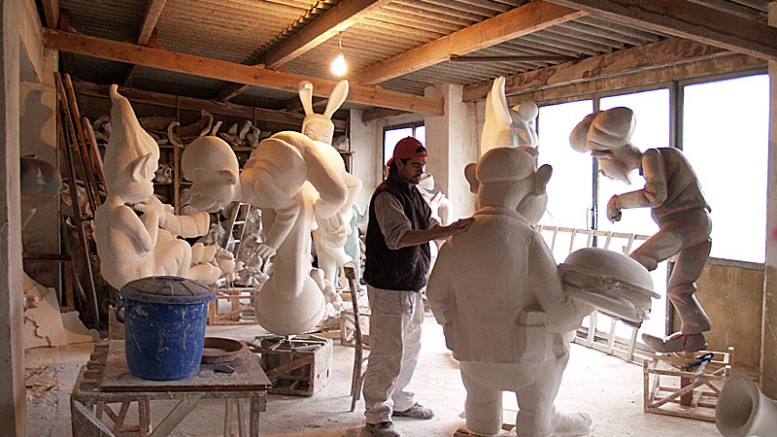
The enormous number of professionals that depend directly or indirectly on the Fallas Fiesta gives an idea of how large and important it has become for the city.
One of the most interesting places to visit to get a better idea of these artists’ work is the “Ciudad del Artista Fallero”, a number of huge workshops where the Fallas monuments are constructed. The whole year round, it sees a frenzy of ongoing work and it is common to find dozens of curious onlookers, interested in seeing for themselves how a Falla is made.
Apart from the “artista fallero”, there are other professions associated directly with the fiesta: there are regional shops, jewellers, hairdressers specialising in the Valencian hairstyle, shoe shops, textile factories (particularly those making silk), and fireworks manufacturers.
Fallas
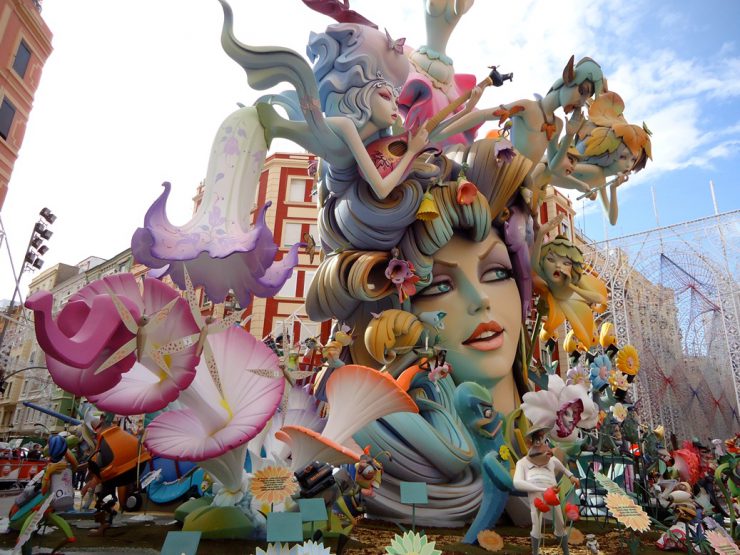
Falla is the name given to each one of the gigantic, sculpted structures of cardboard, wood and sometimes cork, which humorously portray events and personalities.
Every monument has a subject matter, or general theme. On that basis, the artist plays with intentions and ideas, using the subject as a pretext to portray what he or she wants to say.
Even though they are colossal monuments (they can exceed 20 metres in some cases), the most spectacular thing about the Fallas is the way they combine sculpture, carpentry, engineering, painting and, in particular, creativity and humour.
A Falla does not only consider style, composition and modelling. A fundamental role is also played by ingenuity and humour. These are the Fallero terms to define the wit and irony of the artists or writers who devise a monument, when portraying the most significant current events or ferociously criticizing what they consider most deserves it.
The Fallas monuments are distributed in sections, according to their size and budget (costs can range from €6,000 to €600,000).
Ninots
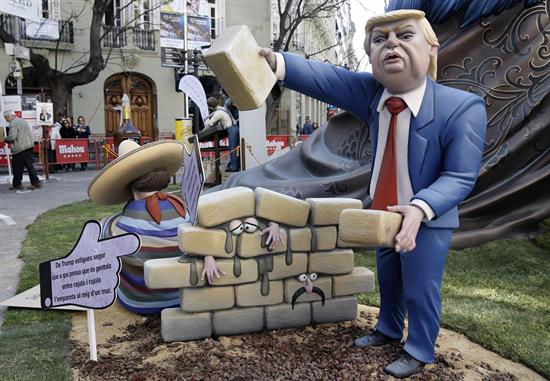
The ninots are the individual figures that make up the scenes in the Fallas monuments. At the beginning of February, each Committee donates its best ninot to an exhibition that is open to the public up until the day of the plantà (see below) when each figure is collected by its Committee and taken back to the Fallas monument it belongs to on a noisy and colourful parade with whistles and brass bands.
Cabalgata del Ninot

A parody parade where the participating Committees dress up to portray famous personalities or current events in a critical or satiric way, playing with double meanings or even provocation. This parade takes no political sides and has no taboos: any institution, person or event currently in the public eye can become the subject of criticism. As a result, it is seen as a Falla on the move with its “human Ninots”.
Cabalgata del Ninot Infantil
Here it is the children who make up the amusing, colourful, lively parades. Although its themes obviously don’t reach the same levels of mordacity as its elder namesake, this cavalcade also includes a fair dose of satire and humour, more suited to the public it is aimed at.
Each visitor to this exhibition has the chance to vote for the ninot that he or she likes best: whether because of its originality or its design. When the time comes to close the exhibition, the votes are added up and the ninot with the largest number of votes is saved from the flames: this ninot indultat will have the honour of being the only ninot in all of Valencia that will not burn on the night of the 19th.
Cabalgata Folclórica Internacional
With the Fallas in full swing, the city centre welcomes communities and groups from around the world to portray their customs, folklore and celebrations. It is a dynamic festival that combines music and colour with elements of tradition and culture.
Despertà
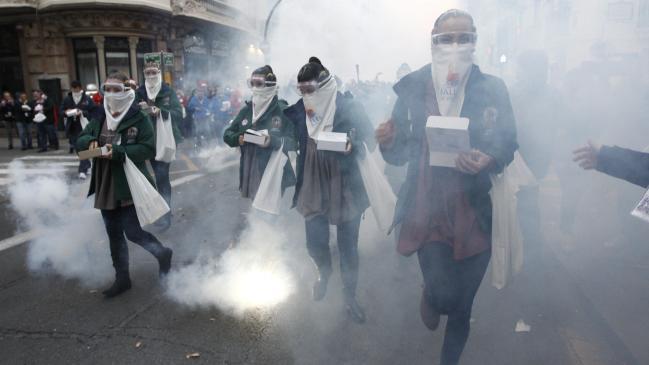
This refers to the act of waking up the neighbourhood. How? Very simple: by setting off hundreds of firecrackers first thing in the morning. The “Falleros” come out into the streets at dawn, armed with a kind of local firecracker known as “tró de bac”, which has no fuse and is set off by throwing it at the ground, making a very loud bang.
Mascletà
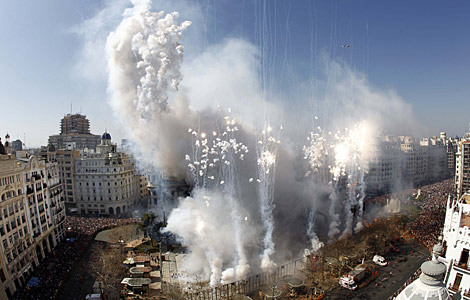
Like a concert of gunpowder: pyrotechnicians carefully study the rhythm of firework sequences, launches and whistles, combining them in a spectacular crescendo that concludes with the “terremoto” (earthquake): hundreds of “masclets” exploding on the ground simultaneously.
The City Council of Valencia organizes a calendar of “mascletaes” from the 1st of March to St. Joseph’s Day (19th March), at the Plaza del Ayuntamiento, the city’s urban centre. At 2pm thousands and thousands of people congregate there, every day.
Nit del Foc
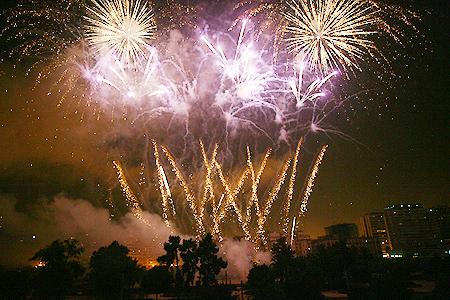
(literally “Night of Fire”), this pyrotechnical festival takes place on the night between the 18th and the 19th of March and acts as a preamble to the main day of the Fallas.
Ofrenda de Flores a la Virgen de los Desamparados
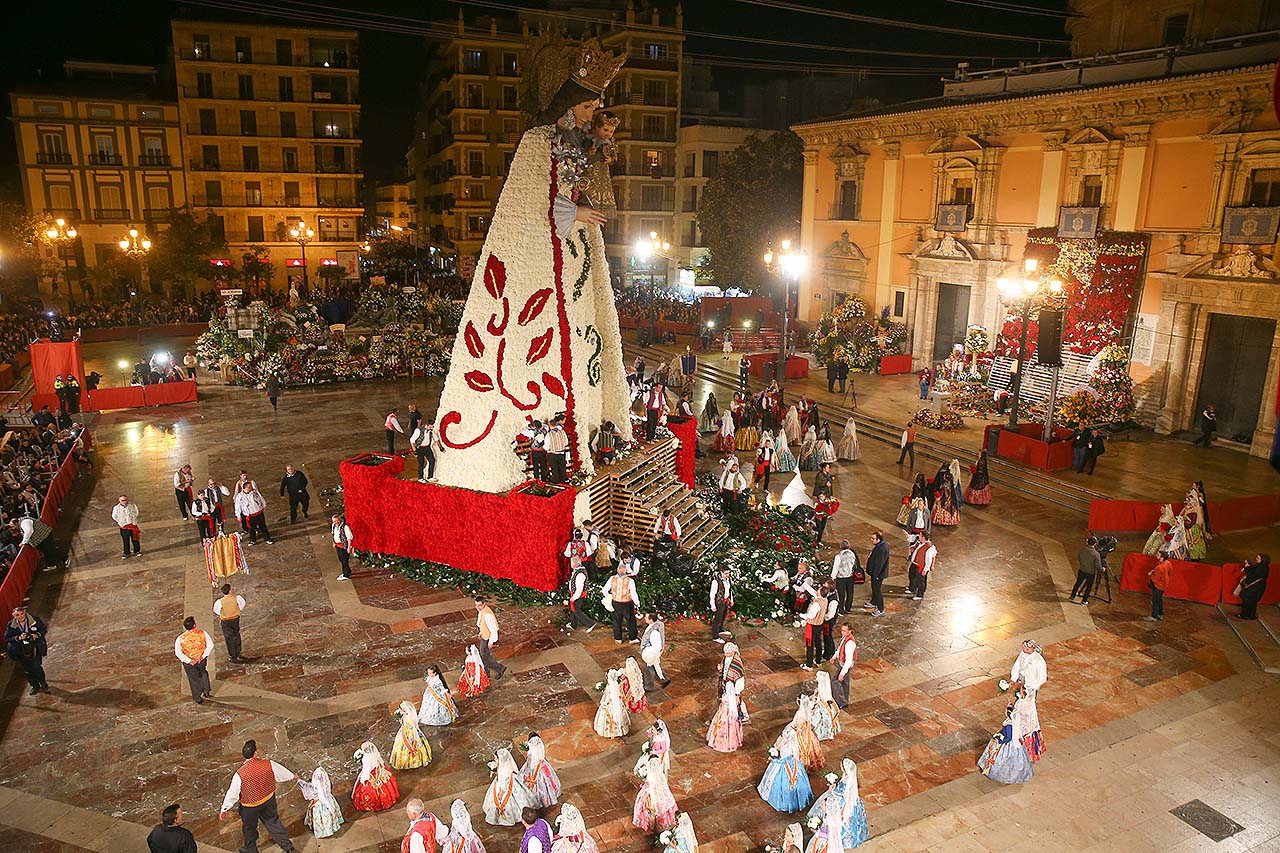
A floral offering to the Kingdom of Valencia’s patron saint, Our Lady of the Forsaken. All the Fallas Committees take part in this event, decked out in their finest, to present their bouquets of flowers to the enormous image of the Virgin which stands in the centre of the plaza named after her, overlooked by her Basilica.
A parade of thousands upon thousands of “Falleras” and “Falleros” fills the city streets, wearing regional costumes and adding to the visual charm with the colours of the flowers. Each Committee brings its own music band and, in some cases, a spectacular basket with the most original and creative floral decorations.
Because of their incredible numbers of participants, the Offering is held on two days (17th and 18th March) and, for many reasons, it has now become the Fallas week’s central event.
La Plantà
In translation, la plantà means something like “finishing touches”. It is actually the moment when the Falla’s top part is finally put in place. Since the Fallas are higher and more spectacular every year, the positioning of these pieces has become a difficult task which may take several days and which is observed with great expectation by dozens of onlookers.
Over time, the expression has become generalised: the “plantà” is now taken to be the exact moment when the Falla is completely finished and ready to be visited, with all its “ninots”, posters and various details (grass, lights, explanatory signs, etc.)
This takes place on the night of March 15th.
Cabalgata del Fuego
(Fire Parade) takes to the streets of Valencia in the evening of 19th March.
Fire is the fiesta’s symbolic spirit and the Fallas’ final destination. This is a colourful, noisy event, with floats, people in costumes, rockets, gunpowder, street performances, music – all at nightfall, as the time approaches for the Ninots to be consumed by flames.
Cremà
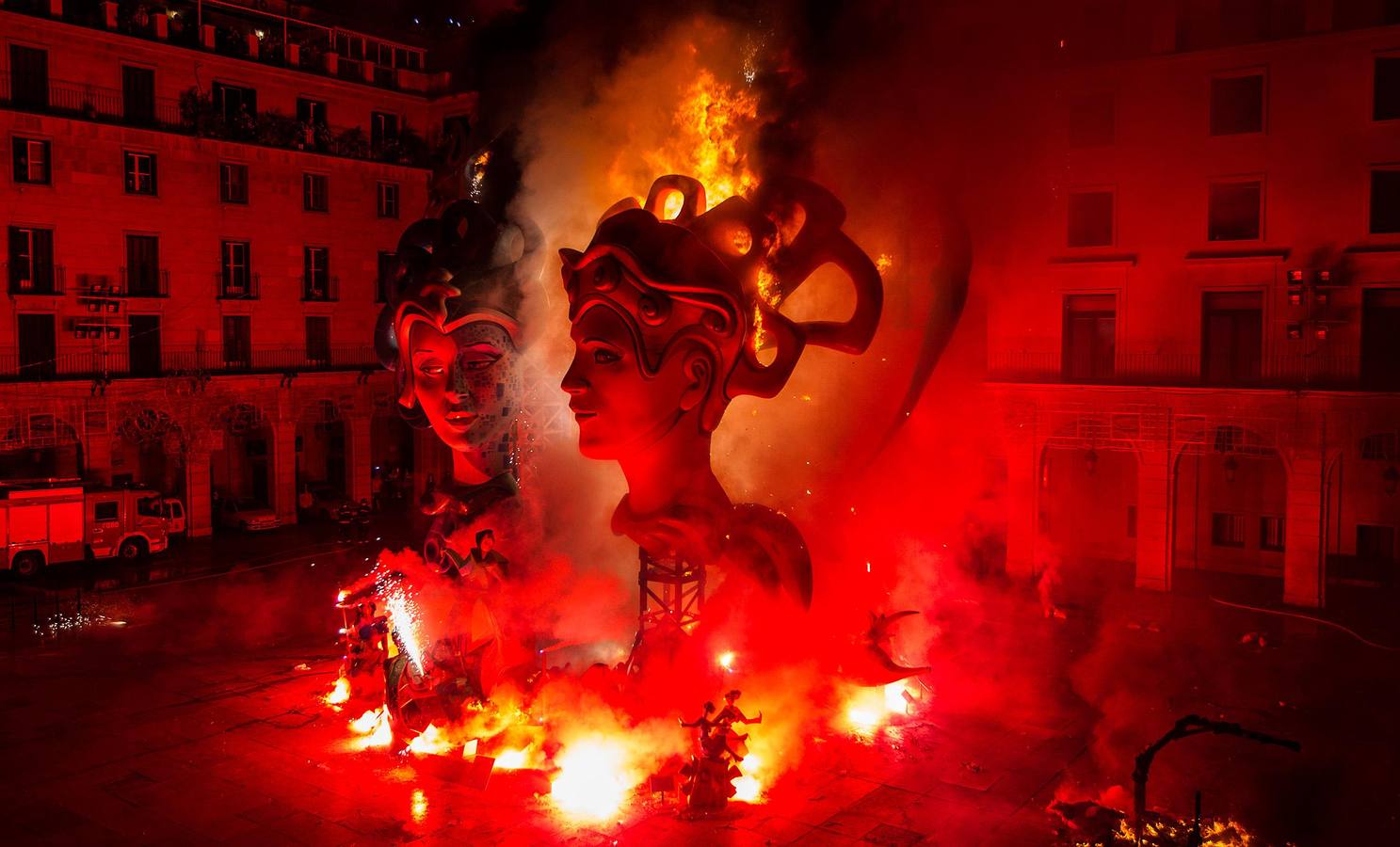
In contrast to the Plantà, which marks the proper start of the Fallas Festival, the Cremà marks its finish.
It is probably the most popular event internationally and the one that gives the concept of “Fallas Fiesta” its full meaning: the monuments are exhibited in the street to be burnt. That is their fate and, at the same time, their grandeur.
In the small hours between the 19th and 20th of March, enormous pyres burn around the whole city. The splendid monuments, which a few hours before stood proudly in the streets and squares, are reduced to ashes amidst the clamour of hundreds of people who attend the ritual every year.
Symbolically, the “Falleros” throw everything that is considered to be superfluous, harmful or simply unusable onto the bonfire and, by doing so, aim to make a new start and regenerate the spirit. This objective has always been the basis of this kind of pagan rite, since ancient times.
Verbenas
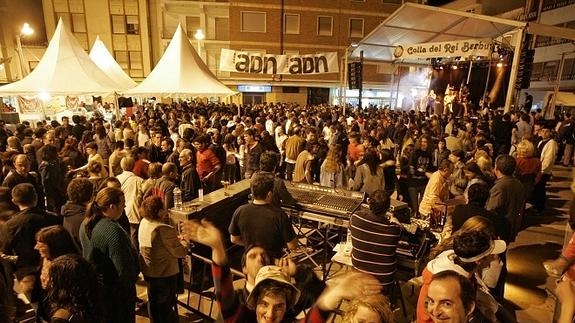
In each neighbourhood, The Fallas Committees organize a large number of street parties known as Verbenas, where locals meet to dance and have a good time. Everyone who wants to join in is given a warm welcome, so they are ideal for visitors, who are sure to find a friendly, laid-back atmosphere.
Now you are ready for Fallas!
For the full programme calendar 2024 click here
 2
Like
Published at 9:46 PM Comments (0)
2
Like
Published at 9:46 PM Comments (0)
The Best Falla of 2023
Wednesday, March 22, 2023
Exhibition-Micer Mascó on March 16th was awarded the honour of being the best Falla of 2023. Located next to the Valencia stadium, Mestalla, and called 'Kromátika', it was the work of David Sánchez, and 160,000 euros were spent creating it, about €100,000 less than in the big favourite built by 'Jerusalem Convent', which took third place, and €10,000 less than second place, that of Plaza del Pilar.
The artist used colour to symbolize an immense chromatic avalanche of muses and gods which configured a huge mythological sculpture. 'Kromática', was designed around chromatic schemes. It is the common thread of each scene and message. The falla has in its composition allegorical figures that represent the primary colours which are facing the supreme creator and others that represent colours such as black - symbolising the crisis or red for Putin.
Here are some photos for those who missed them:
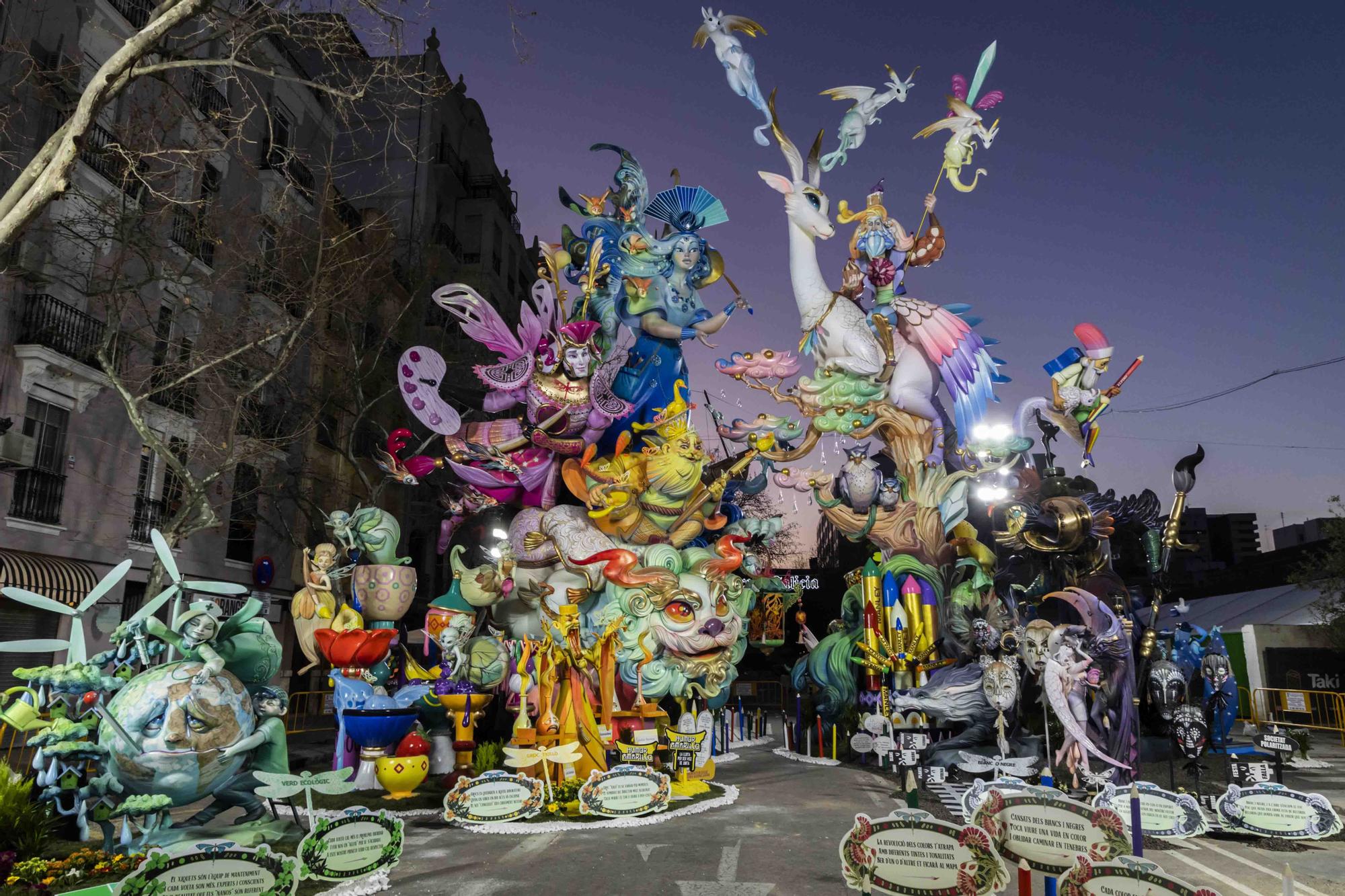
.jpg)
.jpg)
.jpg)
.jpg)
.jpg)
Enjoy the last Mascletá and the final fireworks display
 0
Like
Published at 8:56 PM Comments (0)
0
Like
Published at 8:56 PM Comments (0)
Buñuelos & Chocolate!
Friday, March 17, 2023
.jpg)
Fallas is going full steam ahead and this past weekend brought my first taster this year of the traditional buñuelos and churros with hot chocolate. Buñuelos and chocolate are very typical this time of year in Valencia. There are stands all over town selling freshly made buñuelos and churros which go hand in hand with the celebration so if you come to Valencia you will have to try them. Now I have to admit they are not necessarily the healthiest snack in the world but they are just so incredibly moreish and on a cold afternoon in March they quite simply go down a treat. My favourites are the “pumpkin buñuelos”. Buñuelos are basically sweet doughnuts, which are deep-fried and very crispy on the outside if they are done properly. In Valencia, it is very common to include in the dough mixture pumpkin puree that gives it that special taste.
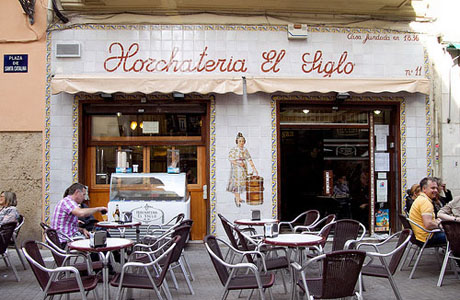
.jpg) .jpg)
So if you are coming to Valencia for the first time or you are looking to try this treat for the first time here is my recommendation. I’ve eaten buñuelos and churros all over Valencia for years on end and I always end up going back to the best place in town, which is where we went this weekend.
The family-run “Horchateria El Siglo” is by far one of the most established bars in Valencia, it has been running uninterruptedly since 1836 and offers the best chocolate and buñuelos in Valencia and also some of the finest Horchata available. It is a very traditional Valencian bar, it looks like it hasn’t been done up for fifty years but don’t let that scare you off as you will be in for a surprise.
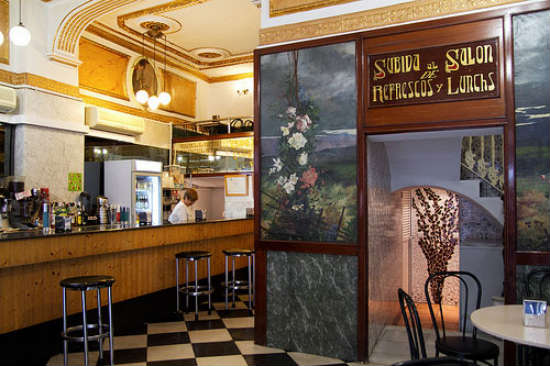
This is “the” place to enjoy chocolate and buñuelos or churros in Valencia, a reference place for tourists and a place many Valencian families lovingly call their “local” generation after generation. It lies a stone’s throw away from the Cathedral in the centre of town, on Santa Catalina Street, you can’t miss it as you will see the ladies making fresh churros and buñuelos just outside the front door as they and their predecessors have done for well over a century. So one thing is for sure if they haven’t perfected the art after so many years, no one has. It is well worth a visit!
 1
Like
Published at 6:39 PM Comments (0)
1
Like
Published at 6:39 PM Comments (0)
FALLAS 2022 - Top 10 Monuments
Thursday, March 17, 2022
 1
Like
Published at 10:10 PM Comments (0)
1
Like
Published at 10:10 PM Comments (0)
Fallas 2021 - Fireworks Programme
Tuesday, August 24, 2021
If you happen to be passing through Valencia during the first week of September why not take in one of Valencia's spectacular firework displays. This year the delayed Fallas 2021 with be taking place from Sept 1 to Sept 5, although many restrictions are in place you will be able to see monuments and enjoy their impressive fireworks displays. However, they will not be held in the town square as they would normally be but have been distributed throughout the city to reduce attendance.
If you want to visit this is the fireworks display programme for the September Fallas. Below is the complete calendar with the day, time, location and pyrotechnics company responsible for the show.
Mascletas - Daytime fireworks displays
Wednesday, September 1
Pirotecnia Tamarit: At 2:00 pm in Natzaret.
Pirotecnia Zaragozana: At 2:00 p.m. in Mestre Rodrigo
Pirotecnia Pibierzo: At 2:00 p.m. in Vicent Peris / Sant Pancraç
Thursday, September 2
Pyrotechnics Peñaroja: At 2:00 p.m. in Lebon / Tomás de Montañana
Pirotecnia Zarzoso: At 2:00 p.m. in Natzaret
Dragon Pyrotechnics: At 2:00 p.m. in Fonteta
Pirotecnia Tomás: At 2:00 p.m. in Avinguda Levante UD
Friday, September 3
Pirotecnia Turís: At 2:00 p.m. in Natzaret
Valencian Pyrotechnics: At 2:00 p.m. in Mestre Rodrigo
Pirotecnia Aitana: At 2:00 p.m. on the Tarongers campus
Pirotecnia Nadal- Martí: At 2:00 p.m. in Vicent Peris / Sant Pancraç
Saturday, September 4
Pirotecnia la Alpujarreña: At 2 pm in Avinguda Levante UD
Pirotecnia Martí: At 2:00 p.m. in Fonteta
Caballer FX Pyrotechnics: At 2:00 p.m. on the Tarongers campus
Pirotecnia Germans Borredà: At 2 pm in Lebon / Tomás de Montañana
Sunday, September 5
Mediterranean Pyrotechnics: At 2:00 p.m. on the Tarongers campus
Pirotecnia Hermanos Caballer: At 2:00 p.m. in Mestre Rodrigo
Pirotecnia Gironina: At 2:00 p.m. in Lebon / Tomás de Montañana
Pirotecnia Europlà: At 2 pm in Avinguda Levante UD
Nighttime Fireworks displays and the special Night of Fire - Nit de Foc
Wednesday, September 1
Pirotecnia Mediterràneo: At 23:59 in Adif / Port
Pirotecnia Mediterràneo: At 23:59 in Avinguda Levante UD
Saturday, September 4
Valencian Pyrotechnics: At 23.30 in Adif / Port
Pirotecnia Caballer FX: At 23:30 in Avinguda Levante UD
Sunday, September 5
Pirotecnia Aitana: At 1:00 in the Fonteta
Pyrotechnics Europlà: At 1:00 in Albalat dels Tarongers
Cremà Ajuntament, offered by the Ricasa pyrotechnics at 0:30 in the Plaza del Ayuntamiento - Town square.
 0
Like
Published at 12:17 PM Comments (0)
0
Like
Published at 12:17 PM Comments (0)
Fallas 2021 - What should have been there...
Friday, March 19, 2021

Via your mobile screen, will be the only way to see the Plaza del Ayuntamiento as it should have been seen these Fallas, with the municipal monument next to the fountain. As this reality is still not possible due to the current situation, the Fallas have turned to virtual reality, one that allows you to get an insight into what should be there...
It is possible to enjoy a tour of the monument that Alejandro Santaeulalía still has packed up in his workshop. Even though the municipal Falla monument of 2021 cannot be enjoyed in the street, it can be visualised through a mobile application developed by the Polytechnic University of Valencia called DULK - available in Google Play and the App Store
This app, through augmented reality, allows you to appreciate every detail of the monument designed by the urban artist Dulk and made by Alejandro Santaeulalía. Simply download it to a device and open the camera to view it. Of course, this will only be possible if you are actually in the Plaza del Ayuntamiento.
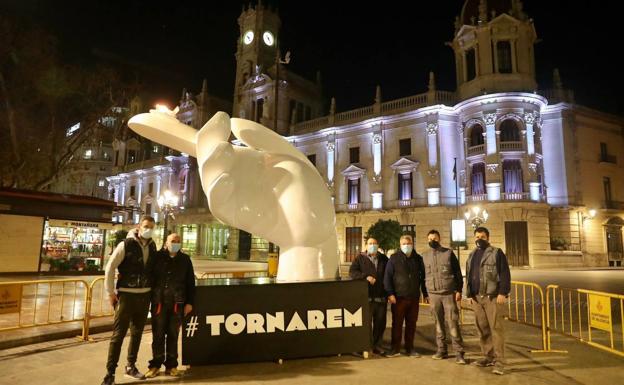
 0
Like
Published at 9:04 AM Comments (0)
0
Like
Published at 9:04 AM Comments (0)
Still haven't been to the Valencian Fallas?..It's not too late!
Thursday, February 27, 2020

Still haven't visited Valencia in Fallas? Isn't it about time?..... The month of Fallas will get underway this Sunday, March 1 as soon as the Crida Opening Ceremony finishes in front of the Serrano Towers. If you think you can make it, it will be kicking off at 20:00 hrs.
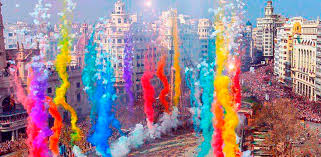 Fallas is a festival that is attracting more and more people every year. I must admit the first time I came to Valencia and saw “Fallas” I was blown away, excuse the pun, as I was amazed at how much money literally went up in flames and the sheer quantity of gunpowder that was used in fireworks and bangers throughout the streets, literally millions and millions of euros. These sculptures are so big that they actually have routes paved out so you can travel through them and see all the details close up. Over 370 full-scale Fallas and 368 children’s Fallas are mounted throughout the city, and many of these reach extravagant heights. Photos do not do them justice at all. It is something that must be seen in the flesh to really take in their magnitude and artistic creativity. They are well and truly works of art, which take a year to build and 30 minutes to burn to the ground. It is without a doubt the best festival in Spain by far. Nothing comes close. Fallas is a festival that is attracting more and more people every year. I must admit the first time I came to Valencia and saw “Fallas” I was blown away, excuse the pun, as I was amazed at how much money literally went up in flames and the sheer quantity of gunpowder that was used in fireworks and bangers throughout the streets, literally millions and millions of euros. These sculptures are so big that they actually have routes paved out so you can travel through them and see all the details close up. Over 370 full-scale Fallas and 368 children’s Fallas are mounted throughout the city, and many of these reach extravagant heights. Photos do not do them justice at all. It is something that must be seen in the flesh to really take in their magnitude and artistic creativity. They are well and truly works of art, which take a year to build and 30 minutes to burn to the ground. It is without a doubt the best festival in Spain by far. Nothing comes close.
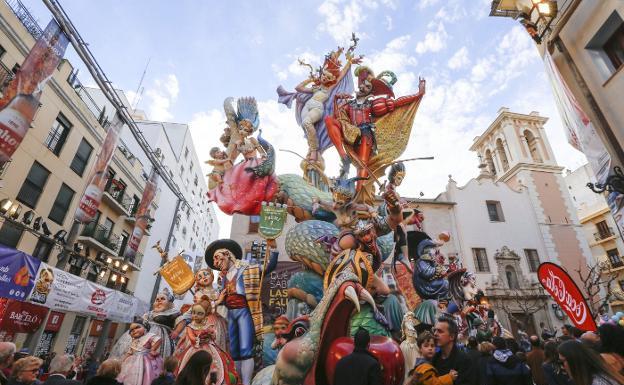
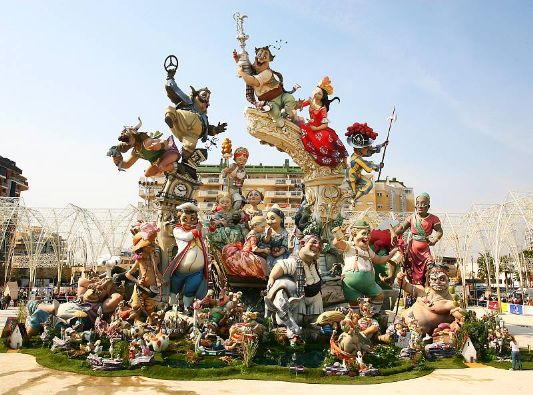
Well in excess of €4 million euros are spent by the Valencians on bangers and firecrackers which are constantly being blown up day and night throughout the month of March. However when you look at the big picture, the direct and indirect economic impact of Fallas for Valencia is well over 600 million euros, so it is certainly well worth it for the local economy. Long live the Fallas! I must admit no one throws a party like the Valencians do! Nonetheless, the vast majority of the Valencianos under 40 have no real idea why they are celebrating Fallas they just do!
.jpg)
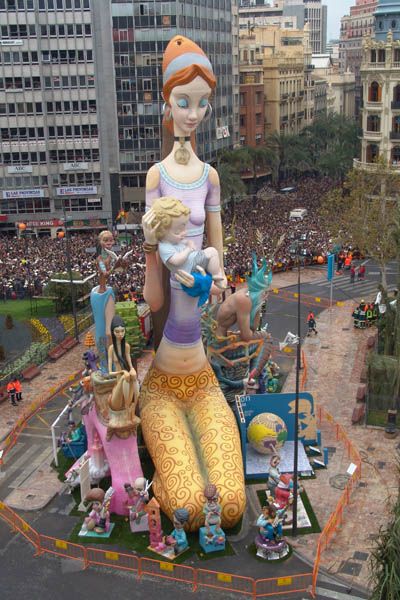
Like many Spanish festivals, Las Fallas was, in its origin, a simple pagan ritual that celebrated the Spring Equinox and the subsequent coming of summer. The religious undertones and celebratory association with Saint José, the patron saint of carpenters, was added later by Spain's ultra-Catholic leaders. The history goes a little something like this:
In 15th-century Valencia, as autumn crept in and the days began to get shorter, artisans and carpenters had to spend the last few hours of the workday working by the light of oil lamps hung from crafted wooden "parots." When spring arrived, the days naturally became longer and it was evident that the pleasant days of spring and summer were just around the corner. No longer needing the lamps, artisans took to ceremoniously burning the "parots," standing them up in the middle of wood shavings, extra cuts of lumber and old junk accumulated with spring cleaning.
At this point, during the morning of 18 March, rag dolls were strung across city streets from window to window, or small platforms were set up against walls displaying one or two figures (ninots) that referred to an event or to certain individuals that were particularly deserving of public derision. Throughout the day, children and young people collected objects to be burnt on these bonfires called “fallas”. All were burnt the evening before St. Joseph's Day in the midst of much celebration.Over time, these workers added a creative touch to the ritual, decorating the lamp post with rags and a hat, thus giving it semblances of a doll or human form; these figures, often depicting someone from the neighbourhood, that came to be known as a Ninot Falla (Doll Fire). The evolution of the festival of Las Fallas as we know it today took place during the second half of the 18th century.
The next day, devout Valencians and carpenters attended their local churches in honour of their patron saint. Families also celebrated the saint's day for anyone called José (also known as Pepe) with cakes, fritters and anisette. It was a time of widespread, neighbourly festivities.
The first documentation concerning the fallas is an official letter sent to the mayor of the city of Valencia prohibiting the placing of monuments (especially of a theatrical nature) in narrow streets close to facades. This measure adopted by the city's police for the purpose of fire prevention led the inhabitants to set up their fallas only in wide streets or at crossroads and in squares and, unexpectedly, led in the long term to an important transformation. Although the fallas continued to have a horizontal, theatrical structure made up of two parts (a platform and a scene arranged on it), they started to be placed on wheels so that they could be moved to the centre of a street or square. As they were no longer placed against a wall, the design changed to make it possible to view them from all sides. This created much greater freedom of construction and invited the inclusion of messages all around them.
For a long time, the term falla was used indistinctly for the torches, bonfires, rag dolls and platforms, but gradually the term came to be restricted to the satirical pyres that exposed vices or prejudices to public scorn. These fallas gave rise to great expectation and the local inhabitants came en masse to view them. The structure was usually prismatic and erected on a square, wooden base decorated with painted frames and canvases or panels to conceal the combustible materials underneath. The figures included in the scenes were usually dressed in old clothes. As with the popular theatrical performances of the miracles of St. Vincent, these satirical fallas usually came with verses that were hung on nearby walls or on the pedestals and that related to the subject of the falla. By the middle of the 19th century, these verses started to be printed and bound, giving rise to the booklet called the llibret. This made it possible to develop the subject much further.
The special characteristic of the satirical fallas is that they represent a reprehensible social action or attitude. They have a specific subject and aim to criticise or ridicule. They are more than mere bonfires or pyres because they show scenes referring to people, events or collective behaviour that their makers - the falleros - consider should be criticised or corrected. The two most popular subjects for falleros in the 1850s were eroticism and social criticism.
In 1858, the falleros in the Plaza del Teatro were officially prohibited from erecting a moving falla with a direct allusion to social inequality with verses written by Josep María Bonilla, but they went ahead, all the same, the following year. The press gave the name of "erotic falla" or "anti-conjugal tendency" to the many fallas that alluded to racy or risqué subjects with verses using double-entendres that reflected a hedonistic, lewd mentality. Bernat i Baldiví wrote llibrets on such subjects but the best-known is that written by Blai Bellver for the falla in the Plaza de la Trinidad in Xativa in 1866. This was called "The Cross of Marriage" and was severely condemned by the Archbishop.
Throughout the 19th century, the Town Council and the authorities, in general, tended to disapprove of these fallas. Their policy of repression, which aimed to modernise and civilise the city's customs by eradicating popular celebrations such as the Carnival and the Fallas, was applied with rigour during the 1860s when heavy taxes were levied on permits for setting up fallas or playing music. This led to a reaction in defence of local traditions and, in 1887, the magazine La Traca awarded prizes to the best fallas. The initiative was continued by an association called Lo Rat Penat. This explicit support from civil society provoked competitiveness amongst the different neighbours' committees, stimulating fervour for the fallas and encouraging artistic creation. Criticism did not disappear from the subjects of the fallas (in some cases, it was politically radical) but a new trend arose favouring formal structural and aesthetic concerns
.
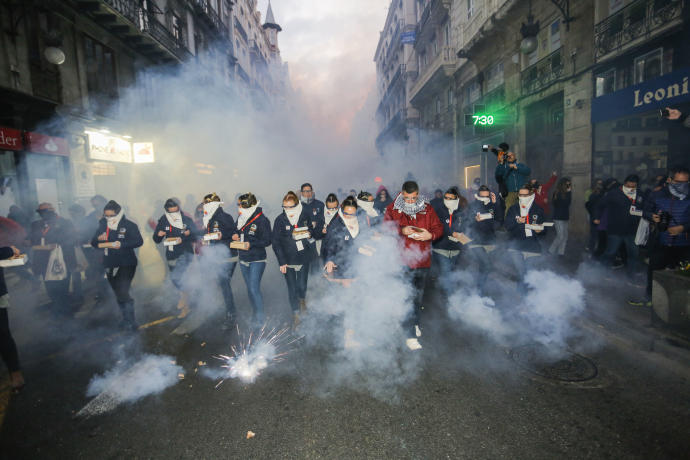
Eventually, though rather reluctantly, the City Council of Valencia took over from Lo Rat Penat and awarded the first municipal awards for the fallas at the end of the festivities - one for 100 pesetas, and another for 50 pesetas. The social climate was not only in favour of this initiative but demanded it. A wide range of organisations was involved - cultural, recreational, civic, sporting, political and for workers - and all of these helped to promote the fallas during the first decade of the century. In return, the fallas increasingly devoted their attention to exalting local values, resulting in a growing association between the festivities and Valencia as their centre. From the start of the 20th century, the fallas no longer maintained the dual structure of platform and scene. A new concept took over in which the figures were no longer the most important part. The fallas now basically comprised three different elements - a low base with various platforms for the different scenes, a central body holding up the monument and a top.
The latter usually comprised a large, allegorical figure, condensing the topic of the whole falla and summarising the scenes below it.
The falla did not only contain a scene set against a background but content was expressed in the whole of the sculpture and had to be deciphered by walking all around the falla looking at it from top to bottom. Fallas had become lavish, majestic and imposing - large enough to be seen from a distance. The competitiveness introduced by the awards meant that the artists strove to produce monumental, elaborate creations.
In 1927, the Valencia Atracción association for the promotion of tourism organised the first Falla Train to bring emigrants from Valencia living in other Spanish provinces back to their home town for the festivities. This was so successful that Valencian society became even more devoted to its fallas and the number of monuments constructed grew and grew. The festivities soon came to require better organisation. The General Association for the Valencian Fallas and the Central Fallas Committee were created to represent the commissions and to organise the celebrations.
An article published in 1935 by Y. Llopis Piquer and entitled "How the fallas are prepared" describes the production of a falla in detail.
"The most important elements are cardboard, plaster and wax, without forgetting the wood of the frames and the metal mesh covered with sacking for the large figures."
Using these simple materials, the Valencian artists emulate the large, long-lasting creations of sculptors, showing their skill in the production of grandiose monuments.
The most difficult and complex task is the construction of moulds for the heads. These are based on clay models which are then cast in plaster and subsequently in wax to give heads that are then completed by adding a moustache, a squint or a sneering expression to give a non-human touch and turn them into the characters featured in the falla.
The bodies are easier to build. The cardboard is pressed while wet onto plaster moulds and then shaped, an essential skill for any up-and-coming falla artist. And a further clay mould is made resulting in yet another human incarnation which will then be completed with physical distortions and material additions. This is the basic method used for turning out the multiple characters of the fallas.
The most difficult part is to paint the wax. There are few artists who are capable of injecting life into the figures by the use of colour but, by dint of experience and perseverance, miracles take place. What still remains to be done? The bodies are then placed on a wooden strut which serves to attach lightweight materials such as straw, cloth, sawdust and wax. The figures are finally erected on the actual day of the plantá when the fallas are placed in their final locations and the frames and mouldings are hammered on. Once in the streets, the figures blend with city life and, in the night-time darkness, observers can be forgiven for not being able to distinguish between what is real and what is fantastic.
It is no exaggeration to say that almost every street corner has its own falla and fallas commission. During the festivities, Valencian women wear their best traditional clothes and parade through the streets in colourful pageantry under their fallas standards to the sound of regional music.
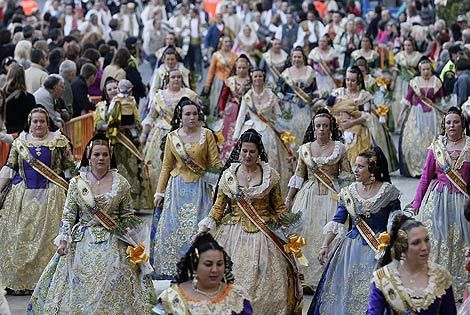
At midday, each falla stages its own daytime-fireworks display, harmonizing the booming sounds of rockets with the smell of gunpowder. They are basically synchronised explosions that vibrate through the entire city, it sounds like a war zone!
At night there are spectacular fireworks displays that brighten up the night-time sky.
The flower offering to the patron saint of Valencia, Our Lady of the Forsaken, (la Ofrenda) is staged on two consecutive days. Thousands and thousands of flowers are placed over a wooden structure that serves as the framework upon which her image is formed. This is located in front of the Basilica and the entire Plaza is perfumed with the fragrance of endless bouquets of flowers. Almost 100,000 Valencians take part in the procession.
.jpeg) .jpeg)
And of course, every day at five o´clock in the afternoon there is an important bullfight within the framework of the March Bullfighting Fair. On the night of the 19th, Valencians burn down their creations, saving only what is known as the "Ninot Indultat", or the “reprieved figurine”, which becomes a museum piece. The children’s fallas are burnt at ten in the evening, with the exception of the first prize in the children’s category, which is set alight at 22:30 and the city council children’s falla, which goes up in flames at eleven.
At twelve o’clock midnight, preceded by a grand fireworks display, the large fallas are set to the torch.
The entire city is filled with flaming fallas. At 12:30 am the first prize Falla is burnt and at 01:00 am at night the Falla in the Plaza del Ayuntamiento is set alight, symbolically finishing for another whole year this semi-pagan, semi-patriotic, semi-religious fiesta that stirs the hearts of the Valencians.
On the day after the ‘night of fire’, a few marks on the asphalt are all that remains of the falla that stood so proudly the night before. The town council spends all night cleaning the City and removing the rubbish and the remains. It is almost a military event, synchronised to perfection. The following day you would never have guessed what happened the night before. On this very same day, the next fallas campaign gets underway.
.jpg)
Each falla elects their own “Fallas Queen” from among the Fallas Maidens who form the court of honour for that particular Falla. Towards the end of the year, they present one of these ladies - not necessarily their Fallas Queen - in the competition from which the judges will choose the thirteen Valencian women who will make up the court of honour for the Valencian Fallas Queen; “Fallera Mayor” of the entire city of Valencia. Children’s fallas follow the same process.
The Fallas are a feast to which people from all walks of life can contribute. No one, even if they try, can come to Valencia during this time of year and stay on the sidelines. The catafalques are there in the street. The parades never end, whether the falleros happen to be marching to collect their prizes, offering flowers, coming to the deafening midday sound fireworks sessions, seeing fireworks at night, or listening to outdoor concerts in the streets. Food and drink are everywhere, with typical pastry stand on every corner. The noise is sometimes too much for people used to quieter quarters, but there is no doubt about it. Valencia welcomes everyone with open arms and encourages everyone to join in with the festivities. So as the days go by I will be posting Mascletas, Photos of Fallas as and when they go up, and anything else related to this unique and fantastic festivity.
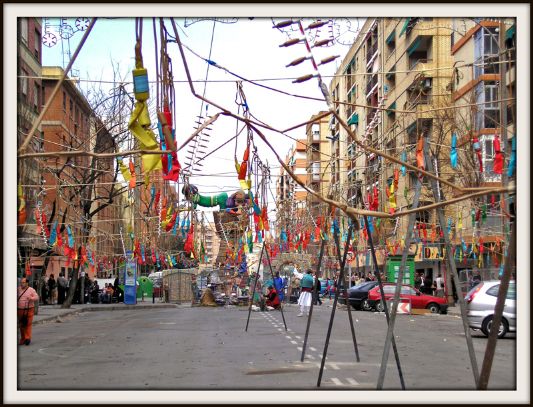
 0
Like
Published at 6:44 PM Comments (0)
0
Like
Published at 6:44 PM Comments (0)
The Best Fallas Monuments of 2019
Wednesday, March 20, 2019
Once again Fallas is over and yet another roaring success for the City of Valencia, but for those who didn't manage to go this year, here is a video and some photos of the best monuments before they went up in flames!
This year the First Prize was won by L'Antiga de Campanar.
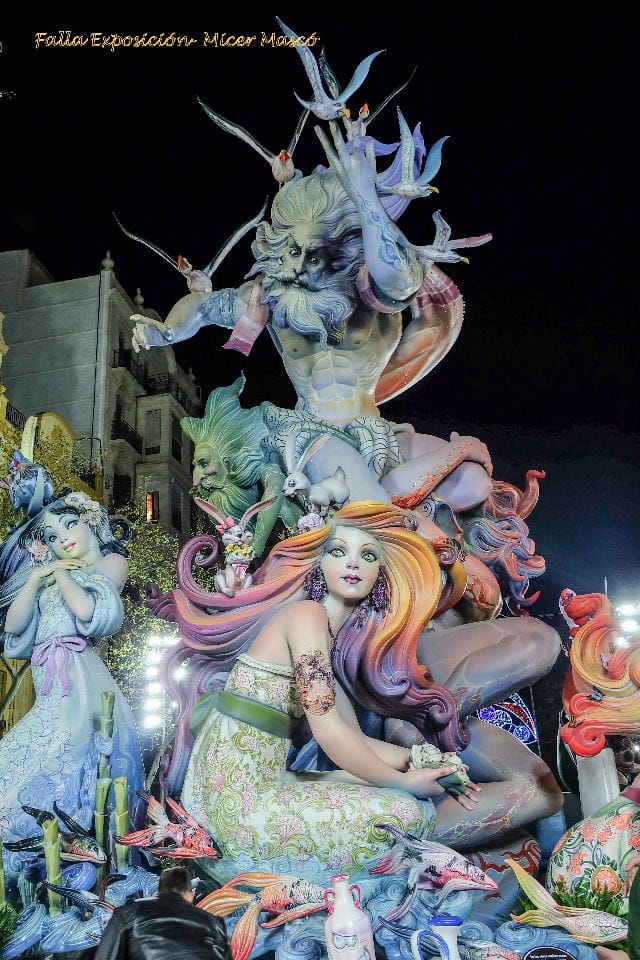
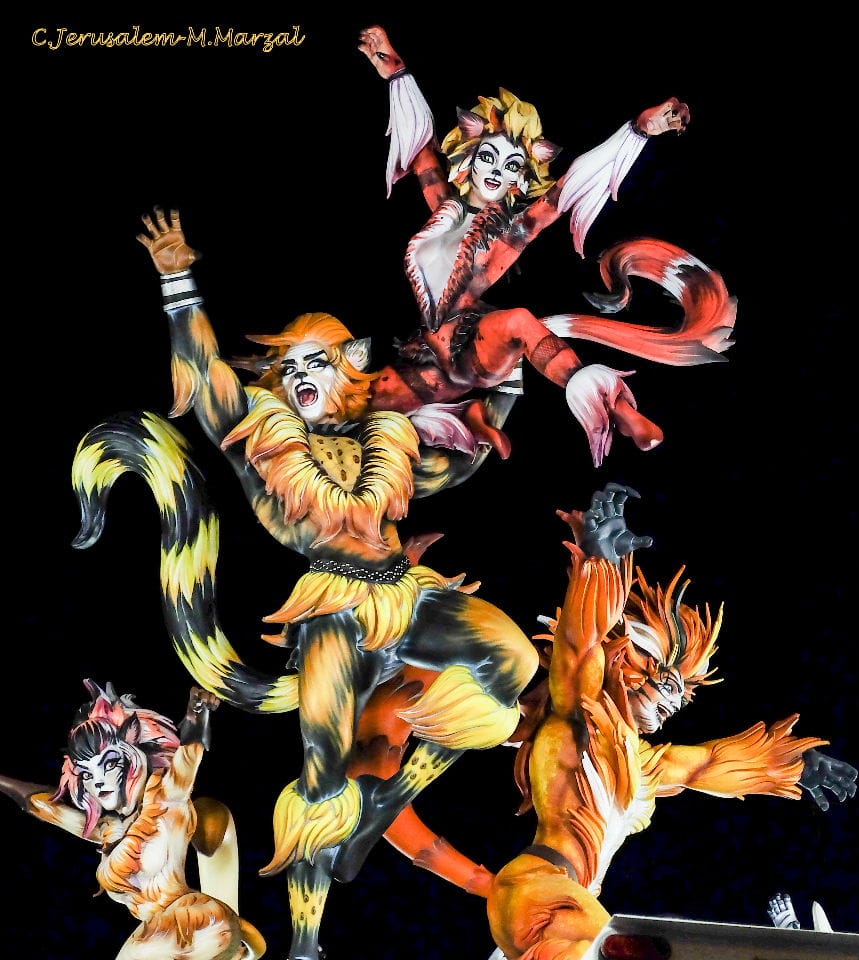
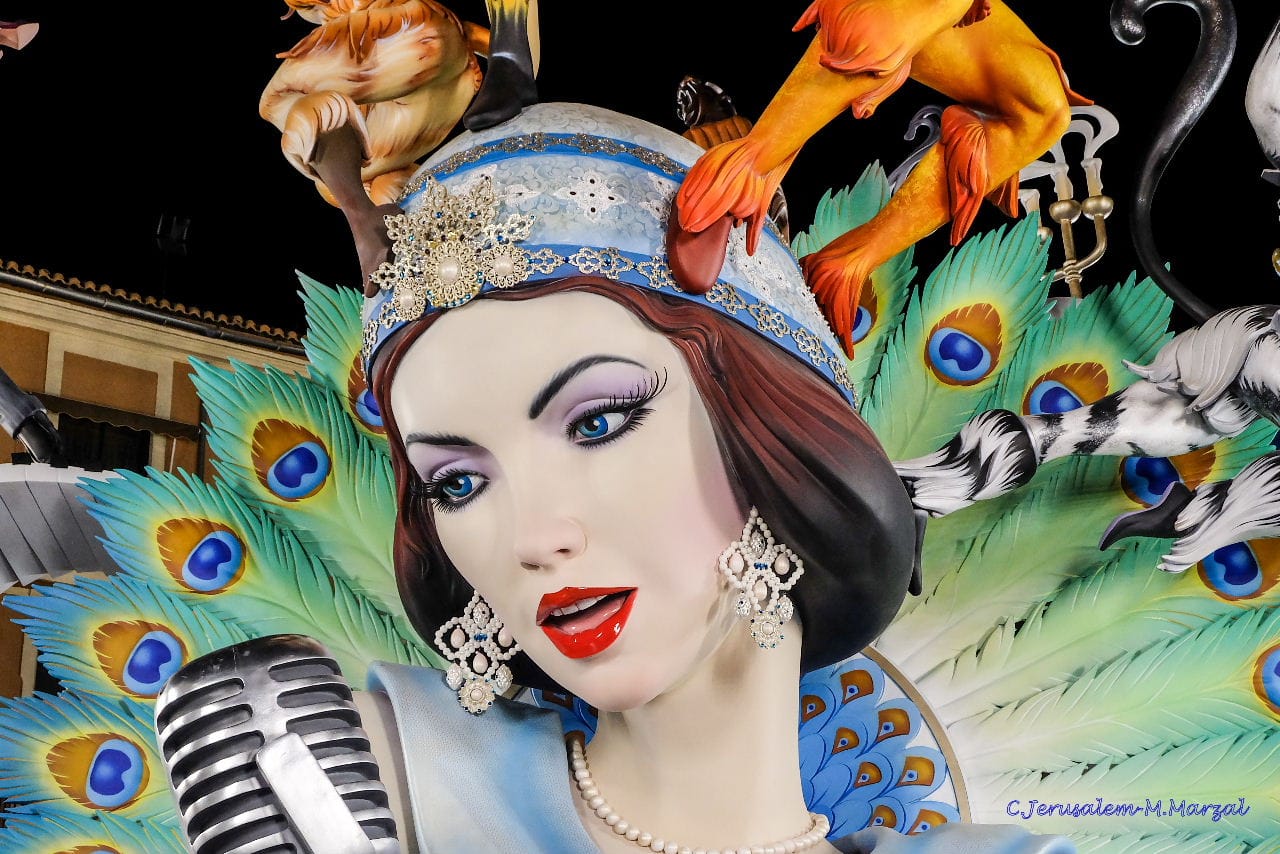
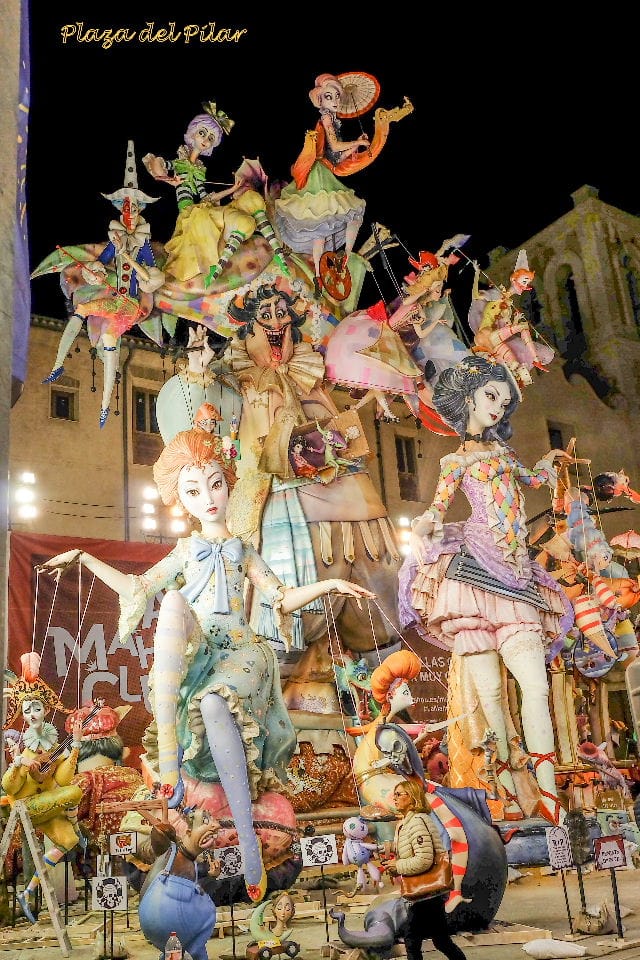
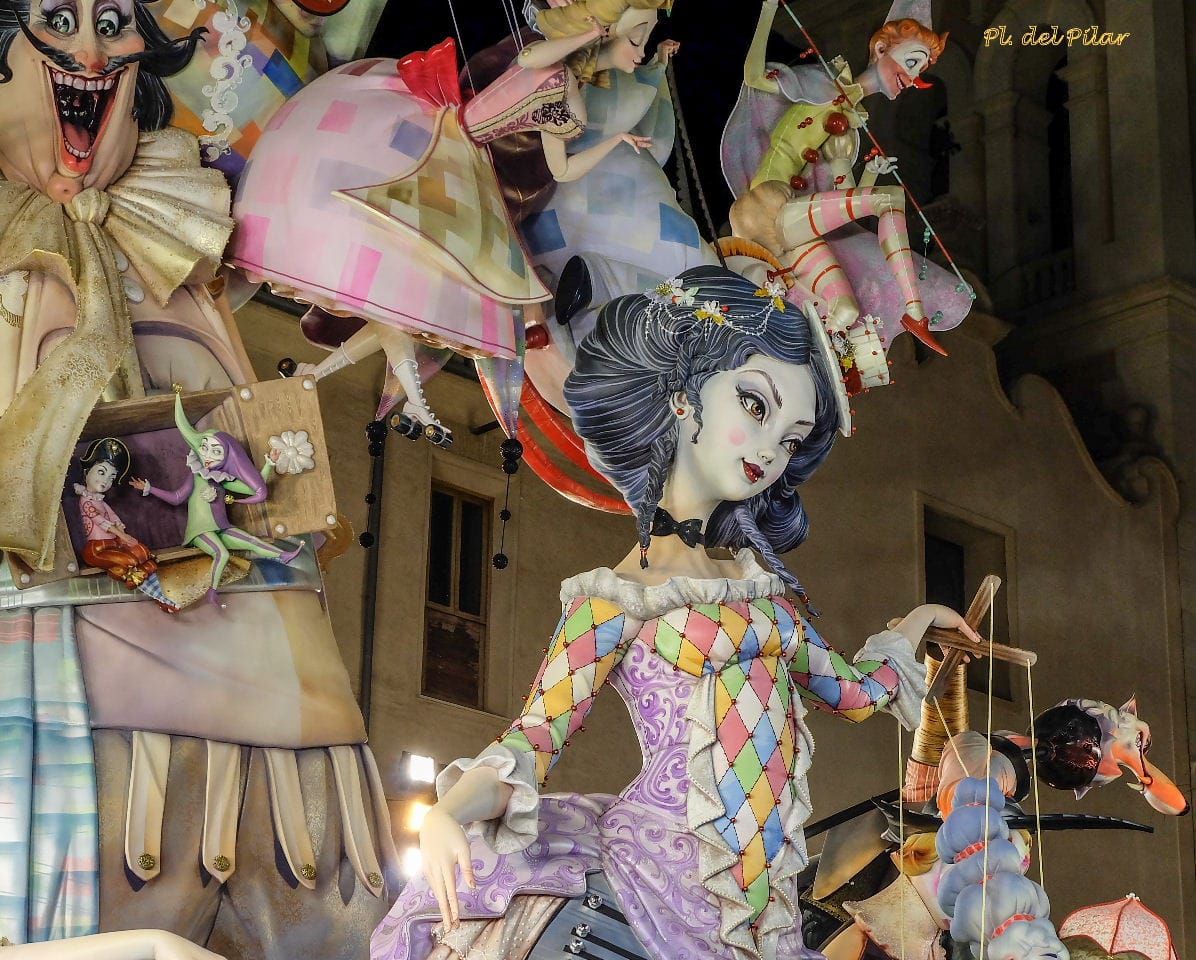
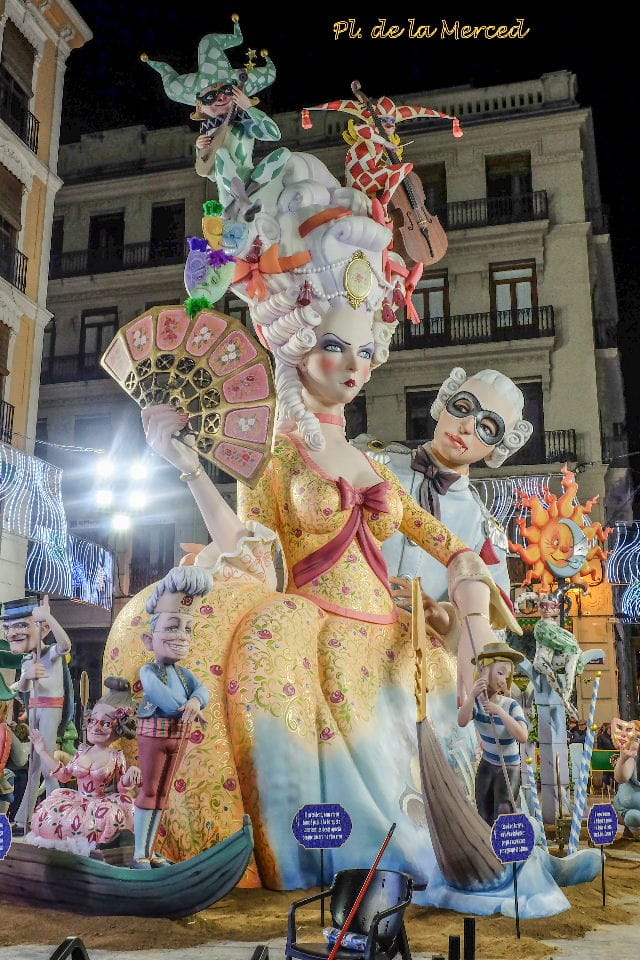
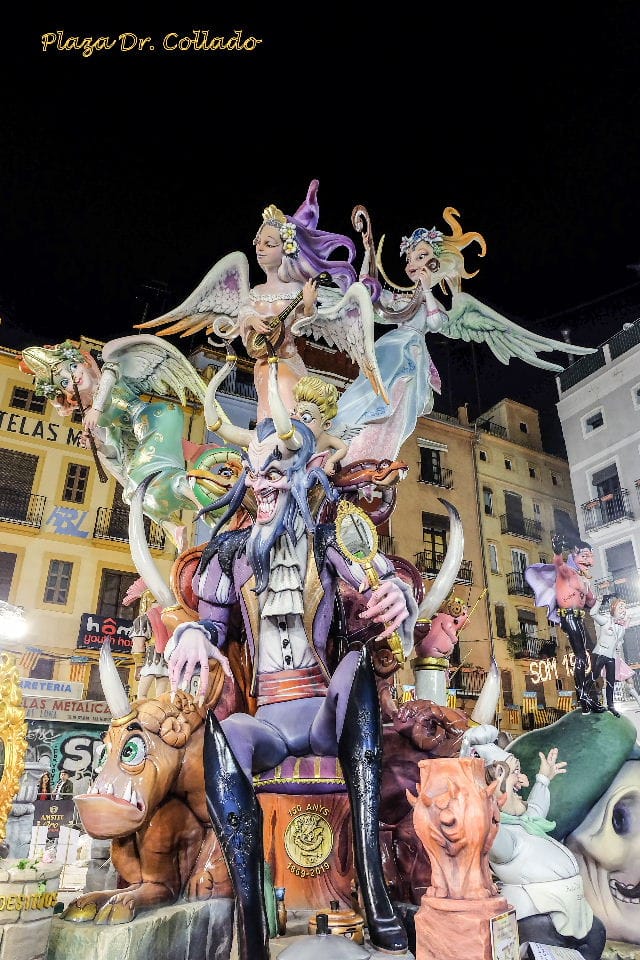
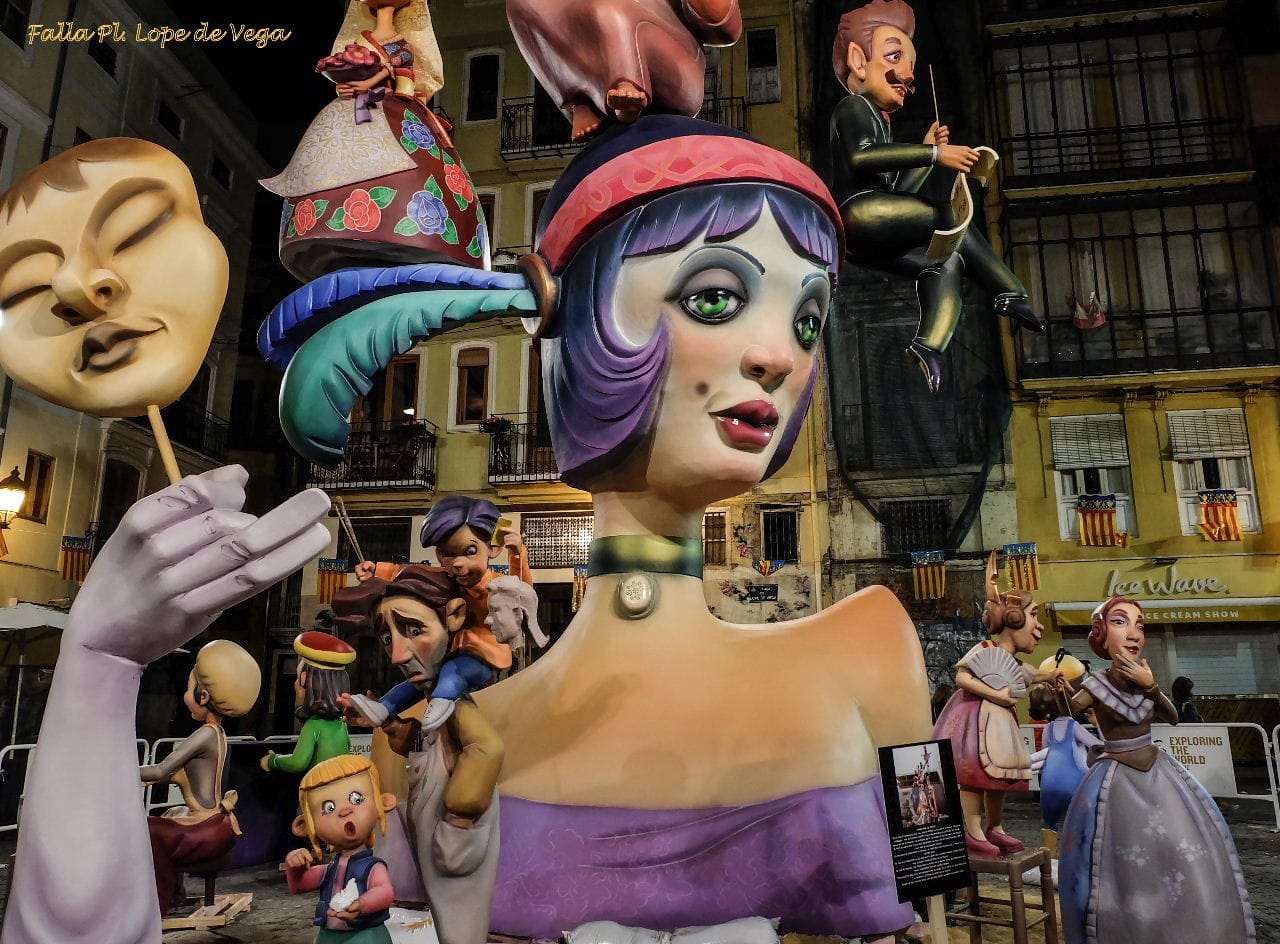
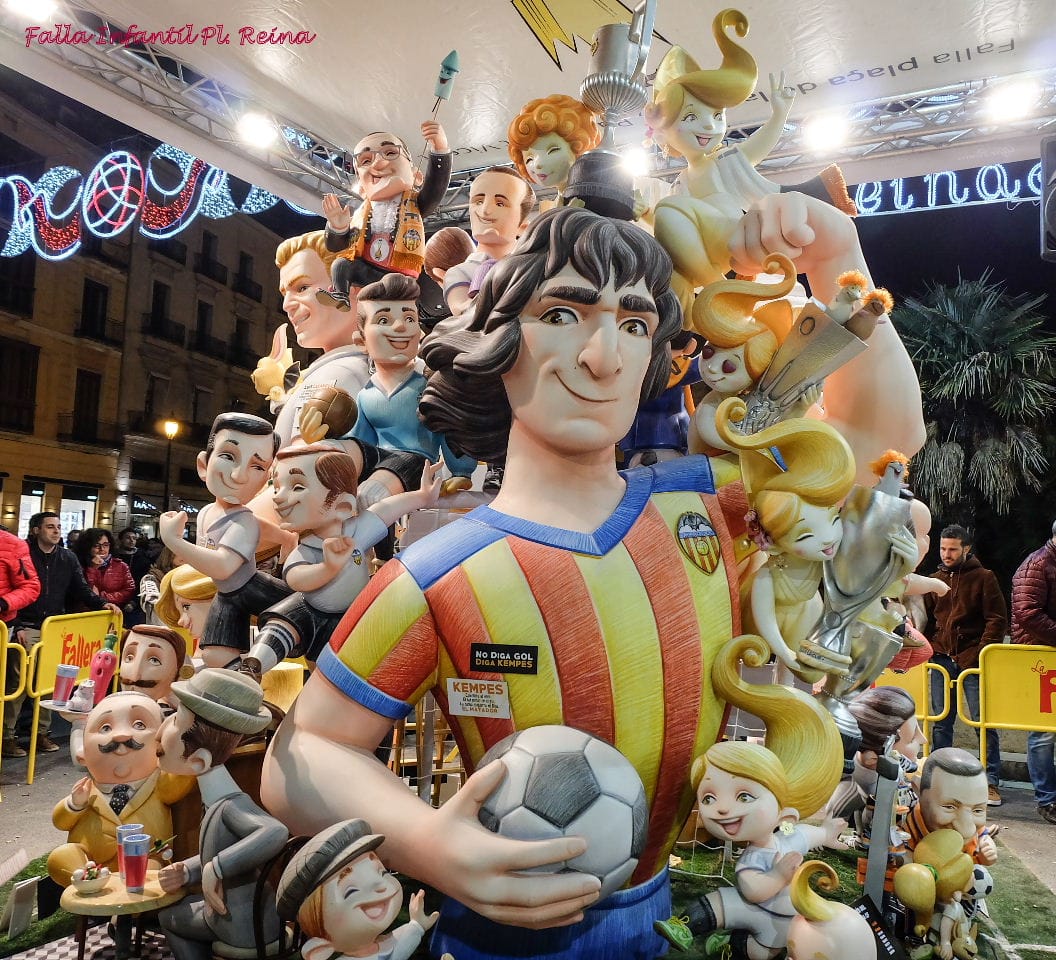
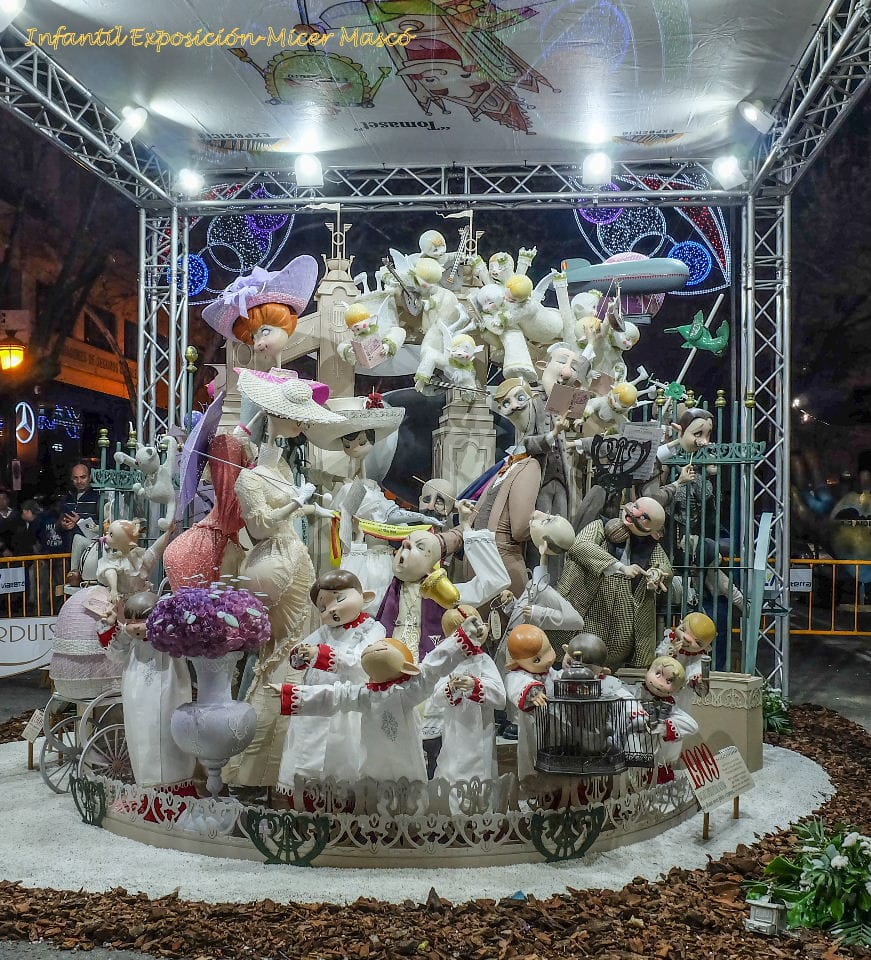
.jpg)
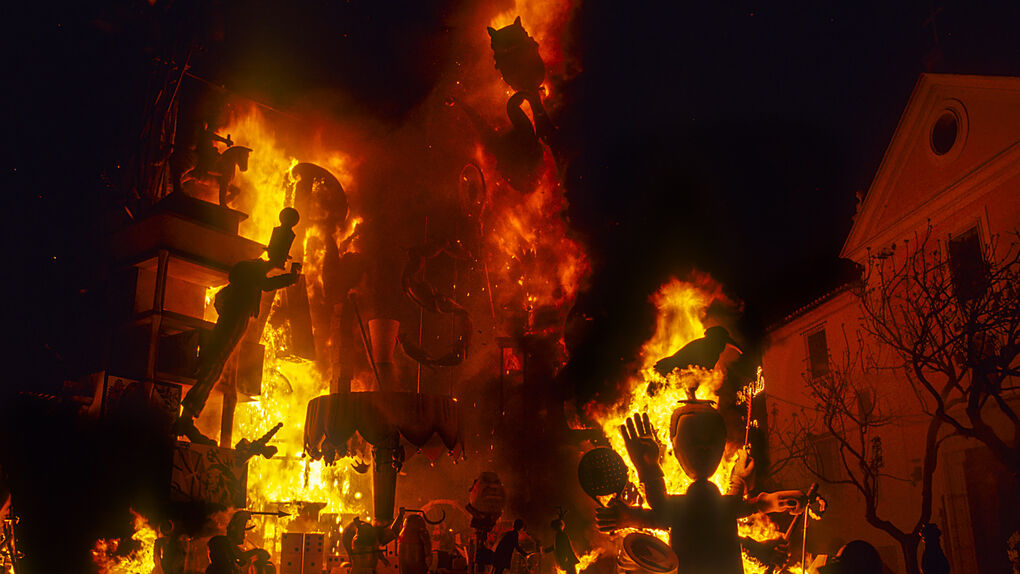
 0
Like
Published at 1:39 PM Comments (1)
0
Like
Published at 1:39 PM Comments (1)
The building and burning of a prize-winning Falla
Friday, March 23, 2018
If you have never seen a Falla being erected or being burnt, it is something that is well worth seeing. A year's work for 5 days of glory and then it all goes up in flames.
In translation, la plantà means something like “finishing touches”. It is actually the moment when the Falla’s top part is finally put in place. Since the Fallas are higher and more spectacular every year, the positioning of these pieces has become a difficult task which may take several days and which is observed with great expectation by dozens of onlookers.
Over time, the expression has become generalised: the “plantà” is now taken to be the exact moment when the Falla is completely finished and ready to be visited, with all its “ninots”, posters and various details (grass, lights, explanatory signs, etc.)
This takes place on the night of March 15th. You can see the video of the ‘Plantá’ of this year’s First Prize Winner below: Falla Convento Jerusalén
In contrast to the Plantà, which marks the proper start of the Fallas Festival, the Cremà marks its finish.
It is probably the most popular event internationally and the one that gives the concept of “Fallas Fiesta” its full meaning: the monuments are exhibited in the street to be burnt. That is their fate and, at the same time, their grandeur.
In the small hours between the 19th and 20th of March, enormous pyres burn around the whole city. The splendid monuments, which a few hours before stood proudly in the streets and squares, are reduced to ashes amidst the clamour of hundreds of people who attend the ritual every year.
Symbolically, the “Falleros” throw everything that is considered to be superfluous, harmful or simply unusable onto the bonfire and, by doing so, aim to make a new start and regenerate the spirit. This objective has always been the basis of this kind of pagan rite, since ancient times. Below you can see the burning of this year’s First Prize Winning Falla: Falla Convento Jerusalén
Planta Convento Jerusalén - How a Falla is erected
The Burning of the Falla Convento Jerusalén - Part 1 & 2
 2
Like
Published at 10:58 PM Comments (0)
2
Like
Published at 10:58 PM Comments (0)
Spam post or Abuse? Please let us know
|
|